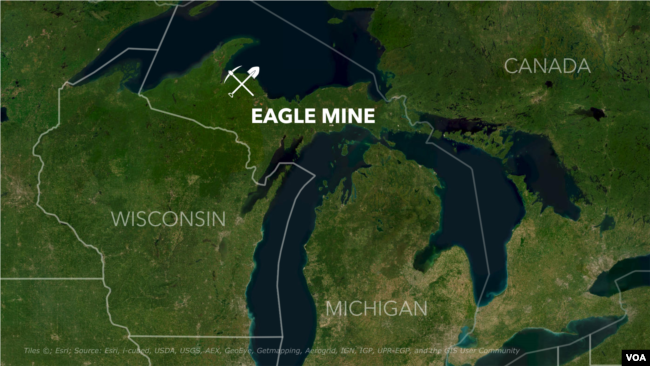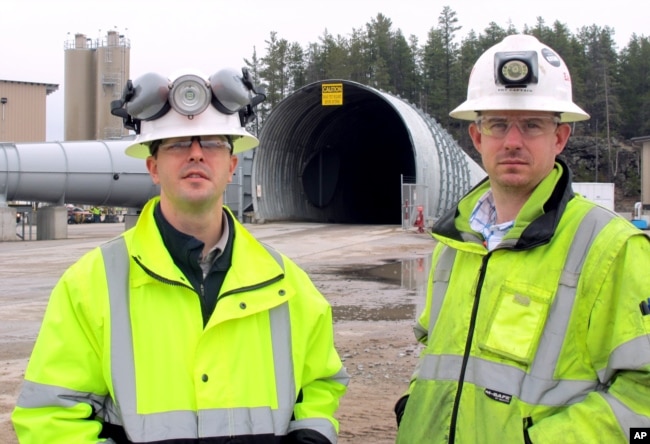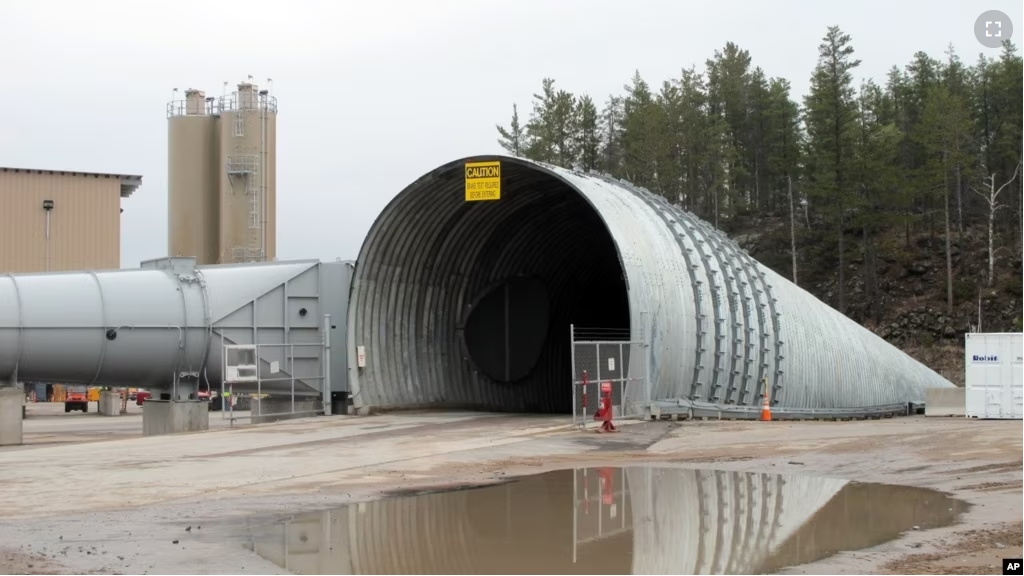About 20 years ago, the international mining company Rio Tinto said it would open a nickel mine in the far northern part of the American state of Michigan.
Rio Tinto promised good jobs for people in the area close to Canada.
But environmental activists had concerns. They were worried about industrial pollution from the metal, the mining byproducts and contaminated water runoff into rivers and lakes.

Many observers expected a long legal fight between the two sides. Some did not believe the mine would ever open.
But the Eagle mine has been open for more than 10 years. There have been no accidents or pollution problems.
People in the area who once protested the mine have found a way to exist with the mine.
Maura Davenport is one of those people. She is one of the top leaders of the Superior Watershed Partnership (SWP), an environmental interest group.
“I was fiercely opposed to the mine, and I changed,” she said.
Davenport’s group was invited to act as a “watchdog” for the mine. Rio Tinto asked the group to oversee pollution testing that has higher standards than regulators require.
The cooperation between the environmental group and the mining company may be an example for other mines around the world.
Many new mines are opening in order to provide minerals needed to make items used by the green energy economy. These items include batteries, electrical wire and magnets.
If countries around the world are to meet the climate goals set in Paris in 2015, there needs to be a 400-percent increase in the production of these minerals. The International Energy Agency said there needs to be an increase of 19 times in nickel production alone.
Davenport said the Eagle mine proposal “divided our community.” Other mines in northern Michigan had opened in the 1800s and closed in the 1930s. The mining companies left behind large open holes and environmental damage. Water that ran from the mine polluted Lake Superior, one of the Great Lakes in the northern Midwest.

Simon Nish worked for Rio Tinto when the Eagle mine was proposed. He said he understands the “dilemma” that communities face. They need jobs and an economic benefit, he said, but “don’t want long-term environmental consequences.”
Residents do not trust the big mining companies he said, so it makes it easier to say no to proposals.
He worked in Australia in the 1990s when mining companies wanted to use land where native Aboriginal people lived. He said he learned that businesses need to “understand the interests of both sides” if they want long-term success.
When Nish arrived in Michigan in 2011, the mine was under construction. But it faced several legal disputes. In order to find a way for the mine to open, Nish considered looking for a partner.
Nish said the Superior Watershed Partnership was already testing water around the area. He asked if they would consider running an environmental testing program for the mine.
Over a few months, Rio Tinto and the SWP made a plan for testing. The group required open access to the mine. It would also test groundwater in the surrounding area. And it required permission to test a processing center 30 kilometers away. Rio Tinto was required to pay for the work.
The agreement launching the Community Environmental Monitoring Program was signed in 2012. More than 10 years later, no major pollution problems have turned up.
But some environmental groups are still concerned. Rochelle Dale is head of the Yellow Dog Watershed Preserve. She said Eagle mine and the testing program are doing good work.
But, she said, “a lot of the sulfide mines in the past haven’t really had a problem until after closure. It’s something that our grandchildren are going to inherit.”
As more mines open up to help meet the world’s demand for new minerals, mining companies are starting to understand how important local support is to their success.
The partnership in Northern Michigan gives large mining companies a “road map.” But, although it has been successful so far, there is no guarantee that an accident will not happen that pollutes the area in the future.
I’m Dan Friedell.
VOA’s Steve Baragona wrote this story. Dan Friedell adapted it for Learning English.
________________________________________________
Words in This Story
contaminated – adj. something that is no longer pure because an outside element has dirtied it or made it harmful
standard – n. something set up by authority or by general consent as a rule for measuring or as a model
item – n. an object of attention, concern, or interest
regulator – n. a person or group that establishes rules and makes sure they are followed
battery – n. an electric cell or connected electric cells for providing electric current
dilemma – n. a difficult decision or question
benefit – n. something that produces good or helpful results or effects
construction – n. the building work that must be done to create something new
access – n. the ability to walk into an otherwise restricted area
inherit – v. to receive something when a person dies
road map– n. guidelines or directions proven successful in meeting a goal
